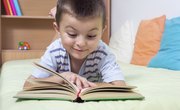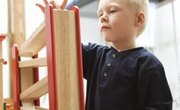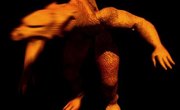From his research into children's language and thinking, Jean Piaget based his theory on the idea that children do not think like adults. Piaget's theory describes the mental structures or “schemas” of children as they develop from infants to adults. He concluded that through their interactions with their environment, children actively construct their own understanding of the world. Piaget's theory purports that children’s language reflects the development of their logical thinking and reasoning skills in "periods" or stages, with each period having a specific name and age reference.
Sensory-Motor Period
According to Piaget’s theory, children are born with basic “action schemas,” such as sucking and grasping. He described the sensory-motor period (from birth to 2 years) as the time when children use action schemas to "assimilate" information about the world. In his book "The Language and Thought of the Child," Piaget describes two functions of children's language: the "egocentric" and the "socialized." During the sensory-motor period, children's language is "egocentric": they talk either for themselves or "for the pleasure of associating anyone who happens to be there with the activity of the moment."

Pre-Operational Period
Piaget observed that during this period (between the ages of 2 and 7 years), children’s language makes rapid progress. The development of their mental schemas lets them quickly "accommodate" new words and situations. From using single words (for example, “milk”), they begin to construct simple sentences (for example, “mommy go out”). Piaget's theory describes children’s language as “symbolic,” allowing them to venture beyond the “here and now” and to talk about such things as the past, the future, people, feelings and events. During this time, children’s language often shows instances of of what Piaget termed “animism” and “egocentrism.”

Animism and Egocentrism
“Animism” refers to young children's tendency to consider everything, including inanimate objects, to be alive. Since they see things purely from their own perspective, children's language also reflects their "egocentrism," whereby they attribute phenomena with the same feelings and intentions as their own. Piaget’s theory also describes “moral realism” as a characteristic of children’s language development at this stage, since young children tend to focus on the extent of any damage caused by a person's actions, without taking into account whether that person had good or bad intentions.

The Operational Period
Piaget’s theory divides this period into two parts: the “period of concrete operations” (7 to 11 years) and the “period of formal operations” (11 years to adulthood). According to Piaget, children’s language development at this stage reveals the movement of their thinking from immature to mature and from illogical to logical. Children's language also reflects their ability to “de-centre,” or view things from a perspective other than their own. It is at this point that children's language starts to become "socialized," showing characteristics such as questions, answers, criticisms and commands.

Expert Insight
Some experts, such as Margaret Donaldson, Professor of Developmental Psychology, have argued that the clear-cut ages and stages forming the basis of Piaget's theory are actually quite blurred and blend into each other. In her book, "Children's Minds," Donaldson suggests that Piaget may have underestimated children's language and thinking abilities by not giving enough consideration to the contexts he provided for children when conducting his research.

Related Articles
References
- The Language and Thought of the Child; Jean Piaget; 2005
- Children's Minds; Margaret Donaldson; 1979
Writer Bio
Mother of three and graduate of the London Metropolitan University, Julie Vickers is an early years teacher and writer who also loves to craft and create! She writes on topics such as education, health and parenting for websites such as School Explained and has contributed learning sessions on child development and behavior for the Education Information and Learning Services website.










